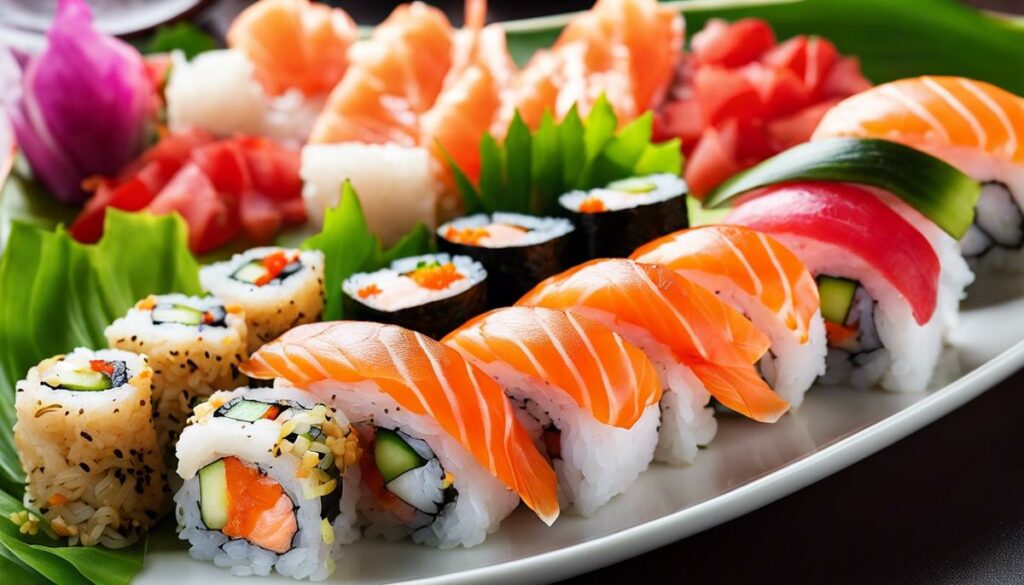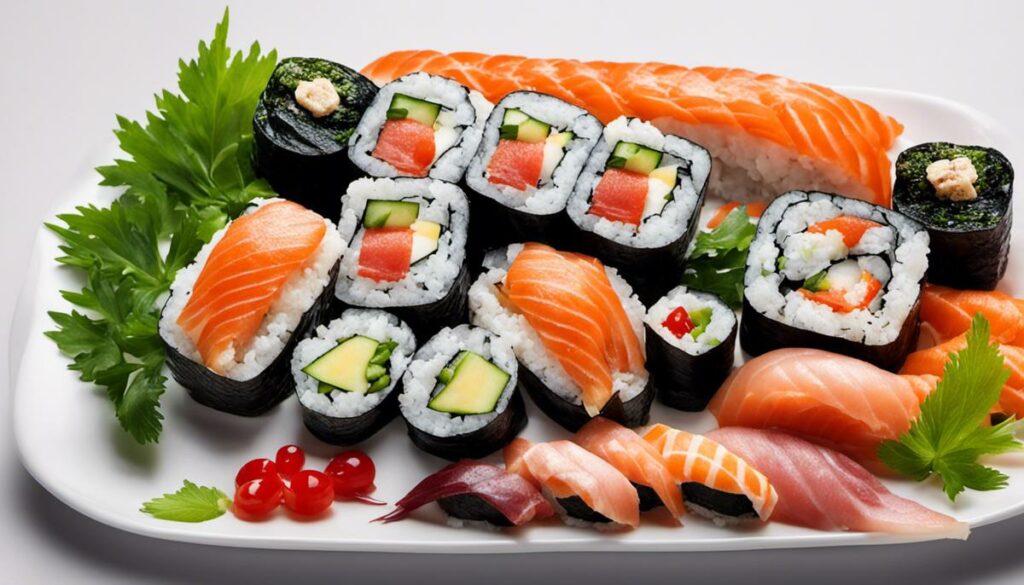In the modern world of nutrition and health awareness, sushi plays an increasingly important role. As a hearty yet light dish that offers both enjoyment and healthy ingredients, sushi has found a permanent place in the diet plans of many fans of healthy eating. However, the understanding of sushi goes far beyond eating a tasty dish. Sushi as part of a healthy diet has its own special status that requires conscious eating. In this sense, this text aims to provide a detailed analysis of the role of sushi in a weight loss diet, taking into account the health benefits, common misconceptions, practical advice for its integration into diet plans and the importance of safe and sustainable sushi.
The basic health benefits of sushi
Do you also dream of a lifestyle that is not only fashionably attractive, but also deeply healthy and satisfying? Let’s talk about an elegant and fine option that can improve our health and even help us lose weight : sushi.
Sushi, an art form and gastronomic experience that originated in the Land of the Rising Sun , has gained popularity worldwide over the years. In addition to its irresistible taste and aesthetics, sushi has numerous health benefits. Here are the reasons why sushi should be an integral part of the lifestyle of a busy, style-conscious, and health-oriented person.
A key aspect of sushi is its simplicity. The focus is on raw fish, accompanied by rice, vegetables and seaweed, which provides an abundance of essential nutrients. The omega-3 fatty acids, which are abundant in the majority of fish used in sushi, are vital for the heart and brain. They can lower the risk of heart disease and improve memory.
In addition to providing vital nutrients, sushi also helps with weight loss. How, you ask? First, sushi is relatively low in calories, especially when raw fish and vegetables are involved. Second, the way sushi is eaten encourages a slow and conscious eating habit that supports satiety and prevents overeating.
Not to be forgotten is the role of wasabi and ginger, which usually accompany sushi. Wasabi has powerful anti-inflammatory properties, while ginger has a long history as a digestive aid. In other words, they contribute to overall health and well-being and add an extra dimension of flavor to sushi.
In this digital age, where everything has to be visual and immediate, the presentation of sushi can be seen as an artistic performance – a feast for the eyes before the first bite. The refined colors and textures, embellished with the aesthetics of crockery and furnishings, embody a way of life that admires luxury, health and style.
Overall, sushi represents a healthy, aesthetically pleasing and elegant option that fits a conscious lifestyle. It’s more than just a dish; it is the synthesis of culture, tradition, health and exquisite taste. In fact, sushi could be the key to finding the balance between sensual pleasure and physical health that we all aspire to. So don’t just think of sushi as food, but as a form of lifestyle that combines joyful enjoyment and physical health.
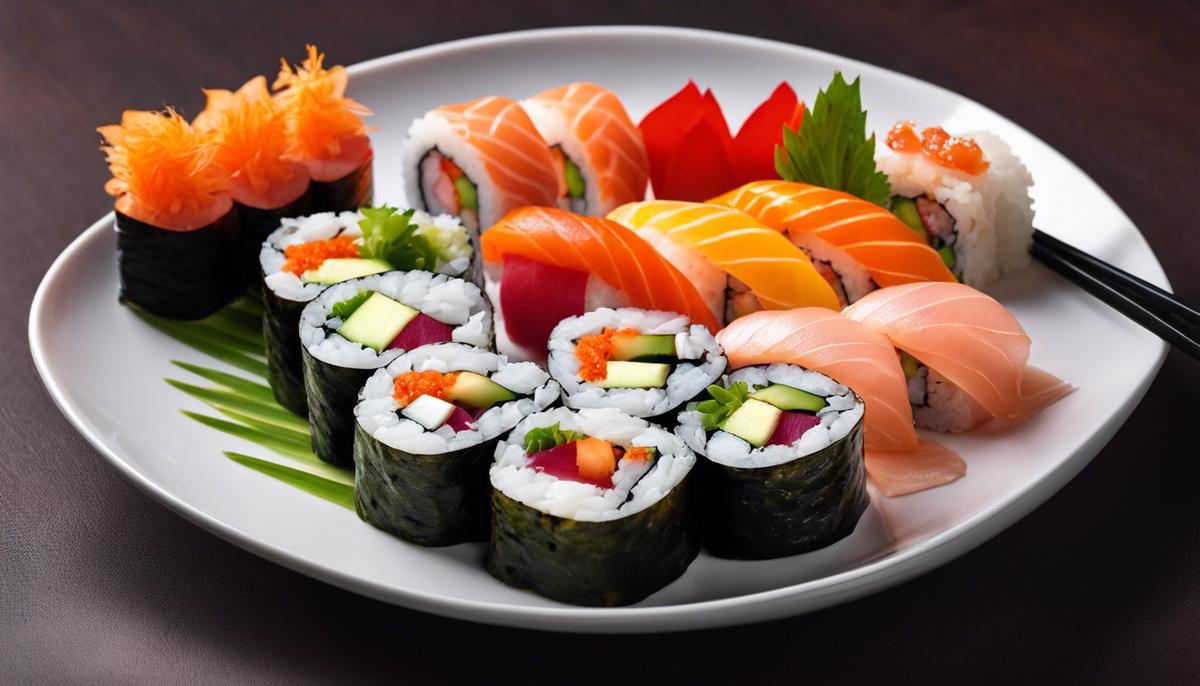
Common misconceptions about sushi in the context of a diet
Now, let’s take a look at some common misinformation associated with sushi and weight loss and how we can set the record straight.
The most common misconception is the belief that all sushi dishes are equal. It is true that raw fish and seafood are often low in calories and provide high-quality proteins. But be careful: not all sushi is the same! For example, a sushi roll with spreads such as mayonnaise or fried ingredients can be very high in calories. A nutritionist who wants to lose weight should pay attention to the choice of ingredients and minimize cream sauces and fried extras.
In addition, it is a common misconception that the portions when eating sushi are small and therefore cannot fill you up. Sushi should not be consumed in a hurry! Rather, conscious and enjoyable eating is an important part of Japanese food culture, which at the same time promotes the feeling of satiety.
Another piece of misinformation revolves around the soy sauce myth. Many believe that by dipping sushi in soy sauce, the dish loses its health benefits. It is true that soy sauce has a high sodium content, which can affect blood pressure. But it should be pointed out that there is an art to how much soy sauce you use to consume sushi.
As with all other things in life, moderation is key when it comes to sushi. It is an upscale lifestyle indulgence that should be enjoyed in microscopic quantities and not in abundance. Through a conscious selection of ingredients, a well-sized portion and the correct handling of soy sauce, effective weight loss can be realized by eating sushi.
Ultimately, one should allow oneself to enjoy the aesthetic beauty and exquisite variety of sushi art without worrying about unnecessary calorie worries. Because through an enlightened choice, you can have nothing but the best of both worlds: excellent taste and healthy living.
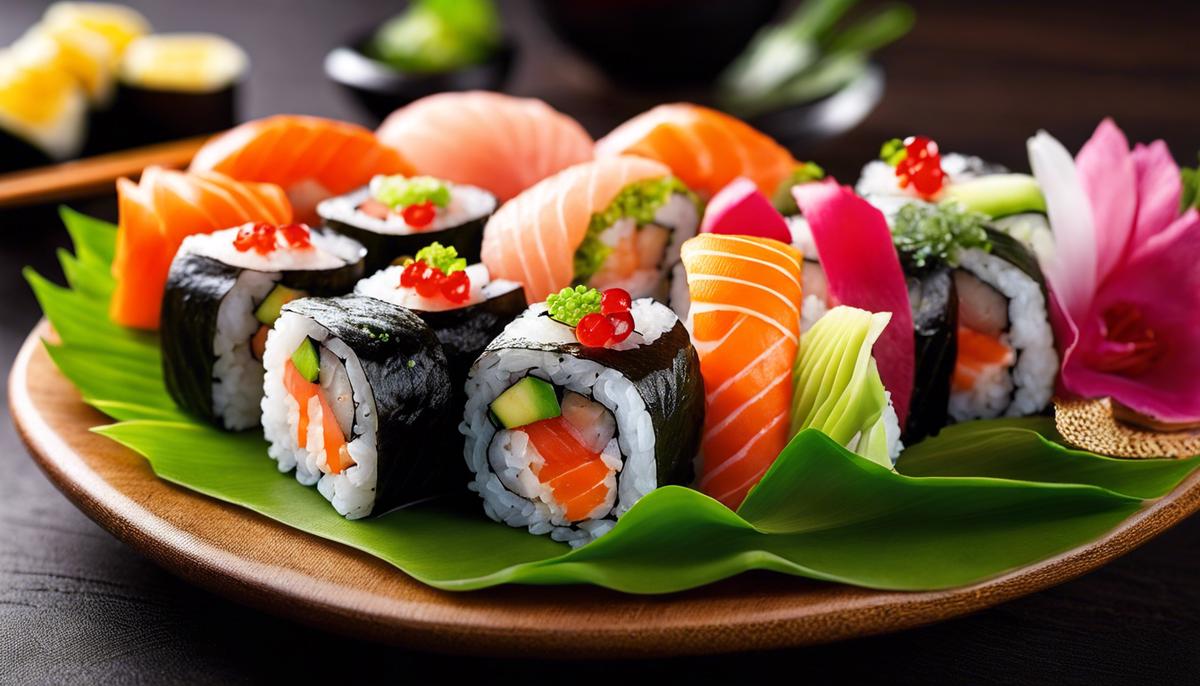
Practical advice for incorporating sushi into a diet
It has already been discussed in detail that sushi is not only a culinary delicacy, but also has health-promoting properties. However, it’s important to realize that not all sushi dishes are created equal, and ingredient choices can have a significant impact on overall calories.
Especially in the case of maki sushi, which is prepared with rice and various fillings such as fish or vegetables, the calories can vary. Tempura sushi made with fried ingredients has a higher calorie density than nigiri or sashimi, which are mainly made from raw fish.
However, the intake of sushi should not be reduced exclusively to calories. It is essential to pay attention to the quality of the ingredients. For example, adding avocado can add healthy fats, while including white fish such as tuna or salmon can provide an excellent source of protein. All of this can help promote satiety and support effective weight loss.
Another common myth is that sushi has small portions and is not filling. However, this can be easily refuted by considering the Japanese art of conscious and enjoyable eating . The key to this is to eat slowly to appreciate the flavors and give the body time to signal satiety.
In addition, soy sauce, an unavoidable element in sushi consumption, is rich in sodium. And while it helps bring out the flavors, excessive use can lead to water retention and increased blood pressure. Remember, moderation is key.
In conclusion, it can be said that conscious sushi consumption is not only stimulating for the palate, but can also contribute to weight loss. It is possible to enjoy the aesthetics and variety of sushi art without worrying about calories. Remember that sushi enjoyment does not end with eating, but can also be seen as an art form that promotes joy and well-being. So enjoy your sushi to the fullest – but always with care!

Safe and sustainable sushi for a healthy diet
Sushi often gets the reputation of being a “healthy fast food”. It’s actually a conscious dietary choice when done right. The authentic taste of sushi lies in its quality. From rice-free sashimi slices to plant-based fillings like avocado and cucumber, the choices are endless. Nevertheless, there are some points that you need to pay attention to in order to choose really high-quality, safe and sustainable sushi for a healthy routine.
One of the most important aspects of consuming sushi is the quality of the ingredients used. Fresh, high-quality ingredients are essential. Contrary to popular belief, sushi doesn’t necessarily have to include raw fish. There are plenty of vegetarian and vegan options that can be just as nutritious and delicious. Let your senses judge that – fresh fish should look clear and not have a strong smell, while vegetables should be crisp and bright.
There is a strong myth that sushi has small portions and is therefore not filling. But in Japanese food culture, emphasis is placed on quality, not quantity. Each piece of sushi should convey a single, intense taste impression. Nutrition-conscious people might therefore keep in mind that while maki and tempura sushi may have a higher calorie count, the sashimi (without rice) and nigiri varieties tend to be lower in calories.
Soy sauce, when consumed massively, can have a negative impact on health, especially because of its high sodium content. However, when used in moderation, it adds an exquisite flavor to sushi. Therefore, the key to enjoying sushi and maintaining a healthy lifestyle is moderation.
It’s also important not to forget that aesthetics and presentation are a big part of the sushi experience. From the colors of the ingredients to the details of the platter or sushi ribbon, sushi is a feast for the senses and a true art form. Enjoying sushi is therefore not only a dietary choice, but also an appreciation of the tradition and creativity behind this iconic dish.
The quality, safety, and sustainability of sushi depends on how well you make your choices. To stay healthy and enjoy, you should always choose the highest quality fish, the freshest vegetables, and the right amount of soy sauce. Eating healthy has never tasted so good! Let’s make a conscious choice together and rediscover our love for sushi.
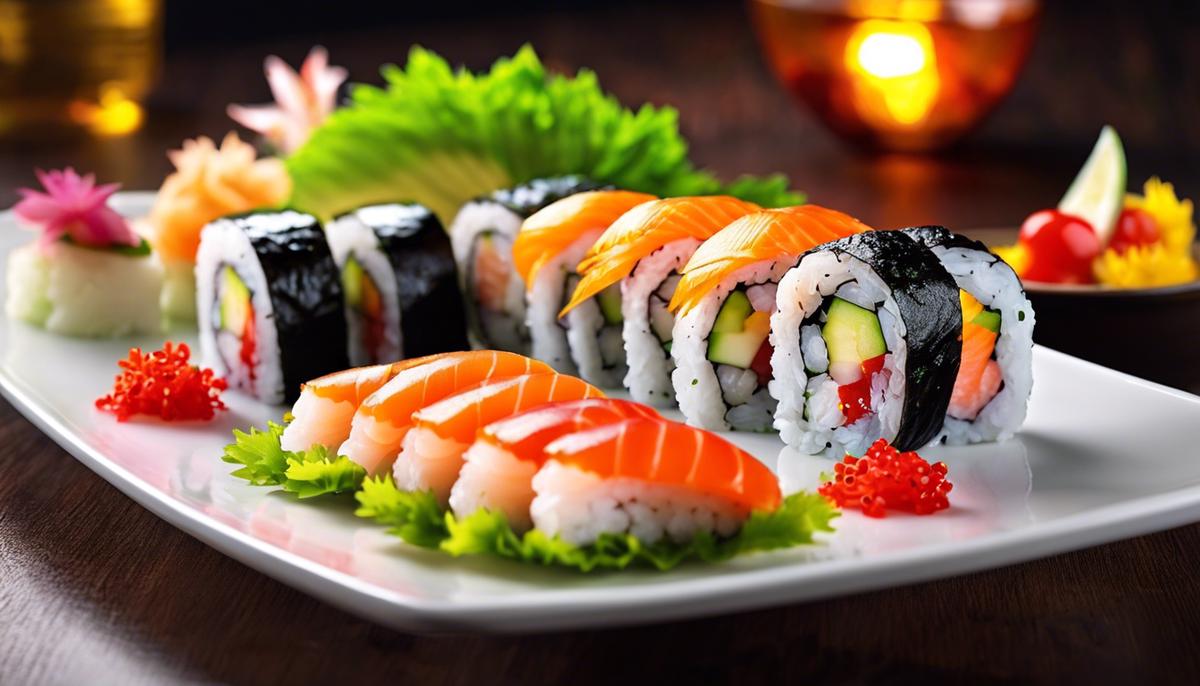
So it’s obvious that sushi can be a potential ally in our weight loss journey if it’s properly understood and consumed. Its health benefits, coupled with the culinary delight it provides, make it an attractive part of any diet plan. At the same time, common misconceptions and advice for incorporating sushi into a diet warn us to be cautious and receptive. Ultimately, our success with sushi as part of a weight loss diet depends on our ability to choose and enjoy high-quality, safe and sustainably produced sushi. So let’s consciously follow this advice and make sushi an integral part of our healthy diet.
